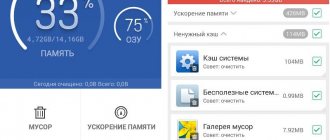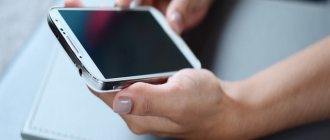The other day it became known that Apple Watch saved the life of a girl from Perm. Moreover, they tried to warn her much earlier. But they couldn't because she never set them up correctly.
All you had to do was go to the Health app on your iPhone.
This application built into iOS collects information about your physical condition, daily activity, and the conditions in which you are. Almost like a medical card .
And through “Health,” Apple teaches users to take care of themselves. The program contains a lot of notes about the nuances of regular activity and the state of the body. It's better to read each of them.
These are the “Health” features that are important for everyone to know about.
Come in and assess your health risks
What to do: Open Health - important notifications will appear at the top of the Overview section
“Health” controls your environment and your body. If there are any risks (for example, the environment is noisy), the application will report this. It will first send a notification and then leave a message at the top of its interface.
For example, Health recently reported that we are in a loud environment. It happened at karaoke, when the next table was literally screaming the next hit. The application suggested leaving, and we left the establishment. Here's how it works.
Supported devices
The free pedometer is installed in Apple phones starting with the iPhone 5S and iOS 8. No additional accessories are required: only a gyroscope is used for measurements. In addition, these devices use the M coprocessor, which monitors activity and at the same time ensures energy efficiency. Without it, the phone would discharge much faster, wasting resources on sensor operation.
If you have an iPhone 4S or 5, then you will not find a free pedometer in it.
You will have to download and install applications from third-party developers. They use a gyroscope and GPS for accurate measurements, so the smartphone battery quickly loses charge. But what can you do for your health?
You can download and install such applications for free in the App Store. We will get acquainted with their work below, but for now we will take a closer look at how the free built-in pedometer of the iPhone works.
Quickly set up your application via Checklist
What to do: ▪️ open “Health”, click on the account image in the upper right side of the screen, go to the “Health Checklist” menu and follow the on-screen instructions ▪️ offers to use this feature also appear in the “Overview” section
The Checklist will help you set up your Health. Here are suggestions to include the capabilities of the program itself and gadgets that can transfer data to it.
For example, the “Checklist” offers me to activate a couple of Apple Watch features that I forgot about after the last iPhone reset:
▪️ “Fall Detection” ▪️ “Noise Notifications” ▪️ “Hand Washing”
The “Checklist” also shows active features and features with restrictions. The latter may be hampered by Privacy settings and Apple's regional policies.
How does a pedometer work on iPhone?
A feature of all iPhones, from the 5th model to the latest X, is a built-in electronic-mechanical pedometer. The function based on the amplitude of vibrations of the smartphone transforms impulses into the number of steps taken, in other words, it counts steps.
If you don't see your step count in the Today tab, tracking may not be enabled.
It's easy to enable by following the step-by-step instructions:
- On the main screen, select the “Settings” icon (gray gear), then look for the “Privacy” item, then click on the “Movement and Fitness” link.
- Opposite the Fitness Tracking function, activate the switch so that it lights up green. In the same way, move the slider opposite the “Health” application.
Another interesting article for you: How to enable notifications on Instagram on iPhone
After this, the iPhone will begin collecting statistics on its owner’s activities: the number of steps, floors walked, and counting the total distance.
There are also third-party programs with similar functionality. It is recommended to install them from the App Store repository.
Another interesting article for you: How to cover a face in a photo with an emoticon on iPhone
Get the most important health statistics on your home screen
What to do: open “Health”, go to the “Overview” section, click on the “Edit” button next to the subtitle of the “Favorites” menu and add those items that are important to you
The main Health menu begins with a list of selected indicators that are important to you. It can be customized as you wish.
Here you can add the number of steps you took today, the number of calories you burned, your latest height and weight measurements, and any other items.
You can also add indicators to “Favorites” through “View”. Almost every item has an “Add to Favorites” option.
And installing the program on your phone
- On your desktop, click the icon of the official AppStore application. The “Selection” item contains the most popular programs. If “Health” is not in this list, you should use the “Search” section by name.
- Select a program and visit its description page. A download link will appear at the top right. Click on it, confirm your installation intentions, wait for the complete download.
- You can also install the application using a PC through the iTunes service. To do this, first register an account on the official website
- Visit the “Store” section, select the appropriate category, select a program from the list. After activating the “Buy” button, the application will be downloaded to your computer.
- Using a cable you need to establish a connection between your phone and PC. After synchronizing the data, the application will be installed.
Count steps, distance and calories
What to do: Open Health, go to View and expand Activity.
Not everyone knows, but through “Health” you can find out a lot of popular indicators:
▪️ number of steps ▪️ walking and running distance ▪️ flights of stairs ▪️ calories burned
All this can be added to “Favorites” so that you can control it directly from the “Browse” section.
You don't need to install additional applications for this. Usually they just pull the indicators from “Health” and show them in their interface.
The only pity is that the “Health” indicators cannot be placed on the Apple Watch dials. Apple believes that to monitor your activity, it is better to use movement circles and warm-ups from the Activity app.
Create your own control panel.
The Health app is an aggregator designed to collect data.
Most of the time, the metrics that appear on your dashboard will be based on data received from other applications. But, there are two exceptions: counting steps and number of takeoffs. Steps and
number of takeoffs.
Using the motion processor on the 5S, 6, or 6 Plus, Health can track your steps without the help of an external app or device like FitBit. The same applies to iPhones 6 and 6 Plus, both of them can track the number of takeoffs (meaning responding to a change in position relative to sea level, which happens, for example, when an airplane takes off) using a built-in barometer.
- To track your steps, go to the Health Data tab, then Fitness. Here, go to the number of lifts and steps, then turn on Show on Dashboard. Now these statistics will appear in the Control Panel.
Track other apps in Health.
This is where the fun begins. In the Health app, check the Sources tab. If you have compatible apps installed, here you can give them permission to share your data with Health.
To show health data from fitness apps and devices in the Health app dashboard:
- Go to sources, then to the app you want and enable read and write permissions. Specify the permission type: Active Calories or Workouts.
- Go to the Health Data tab and find the permission type you recorded in step one. In this category, allow display in the Control Panel.
- Everything tracked in this app will now appear in the Dashboard.
To find apps compatible with the Health app, go to the App Store, then go to the Health & Fitness category.
Find out how much sleep you get every day
What to do: Open Health, go to View and expand Sleep.
“Health” collects information about sleep through the Apple Watch, as well as the chip of the same name on the iPhone. When using a watch, the indicators are more accurate.
Without Apple Watch, Health records the last time you used your iPhone and correlates it with your wake time. Shows me that over the past week I have slept up to six hours a night. This is wrong.
In order for Health to have up-to-date sleep data, it is better to set it up on Apple Watch and sleep on the watch. Another option is to enter all the information manually.
About the application
This program first appeared in iOS 8. It is available on iPhone and iPod Touch. The Health app has not yet been released for iPad and other devices. But you can use analogues. For example, “Cardiograph” for measuring heart rate or “MyFitnessPal” for counting calories and planning a diet.
It is important to remember that all such utilities are not medical devices. Of course, “Health” shows information about heart rate and pressure. But it cannot be used to diagnose or treat any diseases. In this case, it is better to take specialized devices.
But learning how to use the Health app will still be useful. The program has a “Medcard” function, in which medical data is recorded. In addition, you will be able to monitor your condition almost in real time. Therefore, the utility will be useful for both people leading a healthy lifestyle and people with some diseases.
In the application's medical record, you can name your blood type, write whether you have allergies, and what medications you take. And even indicate contacts to contact if something happens to you. The utility is created not only for fitness and sports. After all, a card with medical data that you can carry with you will be useful to anyone.
Health apps can be synced across multiple devices
Receive warnings about dangerous volume levels in your headphones
What to do: Open Health, go to View and expand Hearing.
It is harmful to listen to music with headphones for a long time at a volume of more than 80 dB. “Health” told me about this more than once. This can damage your ears and cause hearing loss.
Also, through the Apple Watch, data about ambient noise gets into “Health”. The louder it is, the less time you can spend in such an environment.
In general, check the “Hearing” section.
Turn on the pedometer
The pedometer can only work when the “Tracking” function is active.
To enable it, you need to do the following steps:
- open “Settings” in the main menu;
- select “Privacy”;
- at the very bottom of the menu that appears is “Movement and Fitness”, you need to scroll through the list and go to this section;
- move the switch to the active position;
- when prompted to allow access to the Health app.
Those users for whom this pre-installed program is not informative enough can download other services for tracking the owner’s activity from the App Store. After that, they will need to allow them to use the tracking feature as per the above scheme.
You can view all collected data from fitness bracelets and Apple Watch
What to do: You can evaluate the list of gadgets that transfer data to “Health” through “Devices” in the account menu
I only have an iPhone and Apple Watch here, but there may be third-party devices as well. Here are some examples:
▪️ Upright Go 2 posture trainer ▪️ Beddit Sleep sleep tracker ▪️ Withings BPM Connect Wi-Fi pulse oximeter ▪️ Withings Thermo thermometer ▪️ Withings Body Cardio Wi-Fi scale
Usually we are talking about smart gadgets that have applications for iOS. They can synchronize information with Health.
Where “Health” is useless.
This is just the beginning, and it is clear that the application will develop.
The most disappointing part is that users cannot export their data anywhere. It would be really useful if users were able to save their data into spreadsheets or export it to other applications. “Health” might also be a little more useful. There are many supported data types in the Health Data > All section, but Apple does a poor job of showing how users can obtain this data. Ideally, Apple would provide recommendations to apps as they become available.
Finally, it would be helpful if Apple allowed users to lock an app with Touch ID.
Health app in iOS: why is it needed, what data is recorded in it, what useful settings are there? Read our article about how to lead a healthy lifestyle with Apple.
Apple Health is an aggregator of data about your body's health on your iPhone. The app collects data from various fitness apps installed on your smartphone and Apple Watch, analyzes it and organizes all the information in a convenient way to give you a comprehensive view of your health.
Keep a log of temperature, pressure and symptoms
What to do: open “Health”, go to “View”, select the required item and click on “Add”
Here are some current examples:
▪️ weight - “View” > “Body measurements” > “Weight”; ▪️ pressure - View > Vitals > Pressure ▪️ body temperature - View > Vitals > Temperature ▪️ pain and other symptoms - View > Symptoms ▪️ blood glucose and others measurements - View > Other Data
This is useful for keeping a log of illness or monitoring changes in the body's condition if you have concerns about your well-being.
A lot of gadgets are compatible with “Health” and are ready to transfer data to it automatically. If some of yours do not support this, measurements can be recorded manually.
By the way, “View” has a search bar for any collected data. It is easier and faster to use than searching for the necessary information in each submenu.
My water
Humans are 70% water. We have known this since school. Therefore, in order to feel better, a person needs to consume more moisture. Unfortunately, we almost never consume the optimal amount of water. A special application, a water tracker, helps you maintain water balance in your body. It will automatically calculate how much water your body needs and, based on the readings that you enter into it (drinking water, juice, tea, alcohol), it will remind you to drink another glass of liquid throughout the day. This will increase your tone and performance, and will have a beneficial effect on the metabolic process.
Accountant and breathalyzer on the phone. Mobile applications for drivers
More details
Connect sleep, running, and nutrition tracker apps from the App Store
What to do: ▪️ you can start getting acquainted with third-party applications from the “Review” section - recommendations are presented at the bottom ▪️ application suggestions are in the items from “View”
For example, there are nutritional assistants, sleep and fluid trackers. Here are some options:
▪️ WaterMinder fluid tracker (RUB 449 + purchases) ▪️ Sleep Cycle sleep tracker (free + purchases) ▪️ Strava running tracker (free + purchases) ▪️ MyFitnessPal nutrition tracker (free + purchases) ▪️ Google Fit fitness aggregator (free)
Such applications make it easier to record indicators in Health.
Is it worth buying an additional fitness tracker?
Before you think about buying an additional fitness tracker gadget, you need to make sure that the functions of your smartphone are not enough. By monitoring whether he or she uses activity tracking apps over the course of weeks and months, the user can decide whether the purchase is worthwhile.
If Health doesn't provide enough information, you should try installing other apps. They will expand the capabilities of the iPhone and may be enough to stop buying a fitness tracker.
However, you need to know that regardless of the software used, the phone itself will not be able to perform 2 functions:
- count pulse;
- track sleep cycles.
Therefore, purchasing a fitness bracelet will be mandatory for those who play sports professionally or are forced to control their heart rate for other reasons. It is also necessary for those who want to use a smart alarm clock.
Create and store a medical record
What to do: open “Health”, go to the account section, expand “Medcard”
To add new data or change old ones, click on the “Edit” button at the top of the screen. This could include the following information:
▪️ name and photo ▪️ date of birth ▪️ allergic reactions ▪️ necessary medications ▪️ blood type ▪️ weight and height ▪️ emergency contacts
The last one is important to fill out just in case. Then trusted persons will receive data about your geoposition when using the “Emergency Call - SOS” function. It is also important to configure it through the menu of the same name in “Settings”.
Apple Health. Fitness Tracking
Apple Health: Health
If you're using iOS 8 or later and don't see the Health app, you may need to update to the latest version of iOS.
Additionally, to use the Health app properly, you may need to enable the Fitness Tracking option:
- Open iPhone settings.
- Select the General , then click Privacy .
- To use Health app features, under Health > Fitness Tracking, move the slider to the right.
Make Apple Watch your number one source of health data
What to do: ❶ open Health, go to Account and then to Devices, select Apple Watch and see what data it provides ❷ go to one of the metrics (such as steps) that the watch affects, select " Data Sources and Access", click on the "Edit" button and drag Apple Watch to the top of the list
The Apple Watch provides accurate metrics for Health, so it makes sense to make it your main source. For example, they count steps more accurately than an iPhone because they are always on your wrist.
To expand the list of metrics that Apple Watch monitors, use the “Checklist” from the second paragraph of the article. It will help enable those clock features that are currently inactive.
What opportunities does “Health” provide?
In addition to calculating the distance traveled by the user, a number of other functions are available:
- Today tab. Displays statistics of the distance covered this day, the number of steps, and floors. When you click on the link you are interested in, you have the chance to set up detailed details in the form of a graph of daily activity. In addition, statistics work for the entire period of use of the smartphone.
- “Meddata” tab. It contains the physical indicators of the iPhone owner: weight, height, lean body mass, body mass index, and waist circumference. Unlike the first point, information inside this section must be entered manually. When you click on the desired parameter, located on a yellow background, the change opens in the form of a graph.
- "Sources". The subsection is devoted to devices that transmit statistics to the program. These are several iPhones, Apple Watch smart watches or a fitness bracelet. The last two devices are capable of transmitting heart rate information.
- "Medcard". Data is available in case of an incident with the owner of the smartphone. Here you must first enter information about existing diseases, allergic reactions or regular use of certain medications. It is also possible to indicate the contact of a close relative. This profile can be accessed from a locked screen.
Another interesting article for you: How to completely remove an application or program from an iPhone
How does iPhone measure steps?
Sensors monitor the physical performance of an electronic device that is carried by its owner. Based on them, the system determines human actions. To do this, the creators of the iPhone used:
- An accelerometer that determines the position of the smartphone in space and its rotation.
- A gyroscope that estimates the speed and type of movement of the phone. This is how the sensor “distinguishes” the actions of the owner: he simply put the device in his pocket or walks with it.
The device measures steps like this:
- The built-in chip determines the oscillation frequency and location of the smartphone, which changes as a person moves.
- With each step, the initial and final speed changes. They are caught by the sensor, and the system compares the results with the data recorded in the system during calibration. If they coincide within certain limits, the program evaluates them as a step and takes them into account.
- The data is displayed on the screen.
Important: when the pedometer is turned on, the smartphone discharges faster. Newer versions of the program are optimized to reduce battery consumption.











